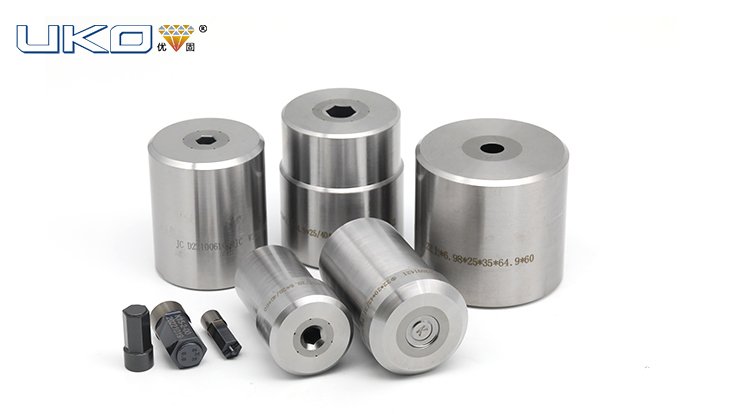Do You Know How Extrusion Punch Are Widely Used ?

Extrusion punch is a mold accessory made from steel materials suitable for processing, such as high-speed steel, powder high-speed steel, tungsten steel, and other molds. Suitable for processing industries such as cold heading, cold extrusion, stamping, hydraulic pressure, and injection molding.
Punch bars are important accessories in cold heading molds, which can be divided into front punch bars and rear punch bars based on their position during operation; According to the function of punching bars, they can be divided into: shaping punching bars, positioning punching bars, punching punching punching bars, forming punching bars, stretching punching bars, grooving punching bars, punching punching punching bars, etc; According to the shape, it can be divided into: round punch, four corner punch, five corner punch, six corner punch, eight corner punch, twelve corner punch, plum blossom punch, sub mother punch, star shaped punch, and other special punch.
The material selection for the extrusion punch is mainly high-speed steel, with commonly used materials including SKH9, SKH55, and SKH59 from Japan and M2, M35, and M42 from the United States; The main characteristic of the material is that it can maintain good red hardness and excellent wear resistance during high-speed punching and upsetting, and can ensure a certain degree of toughness; There are also some powder high-speed steel materials commonly used, such as ASP23, ASP30, and ASP60.
The performance of the material is worried about high-speed steel, but its price is high, and the inventory is not complete, with a relatively limited range of use. Tungsten steel punch bars are a new product that few enterprises have been able to produce in recent years, mainly using hard alloy production. They have high requirements for material toughness, high technical barriers during production, and high production costs. They are commonly used in the stainless steel cold heading industry and heavy drawing field. The surface treatment of punching bars. With the improvement of product quality in China, more and more production enterprises have high expectations for improving the service life of punching bars. Titanium plating treatment on the surface of punching bars is a very good choice; Its advantage is that the size control of the workpiece after titanium plating is relatively good, with a thickness of generally 2-3UM, and the deformation of the punching rod is also very small, making it very suitable for surface treatment of the punching rod. After titanium plating, the surface friction coefficient of the punch rod decreases and the surface hardness increases, greatly increasing the wear resistance of the punch rod and thus prolonging its service life.
The types of titanium layers commonly used are TIN, TICN, TIALN, ALCRN, etc. The comparability depends on the technology of different manufacturers and will not be elaborated too much. The distribution of punching rod production in China is mainly distributed in the Yangtze River Delta and Pearl River Delta regions where I live. The production of punching rods has high requirements for raw materials, and currently it is mainly imported. There are also domestic materials being developed one after another, but the stability is not enough. In addition, the heat treatment of the punch material is also very technical, and suitable heat treatment processes such as quenching temperature, tempering temperature, and supercooling duration should be designed based on the specific usage environment of the punch.
The demand for production efficiency from economic and social development has led to the widespread use of high-performance punching needles and punches, with tungsten steel punches, also known as hard alloy punches, being the majority. The excellent performance of hard alloy punch bars greatly surpasses that of high-speed steel punch bars. The precision requirements for the hard alloy punch bars used in precision molds are high, as well as product consistency. It is required that each punch bar produced in bulk should meet the dimensional accuracy tolerance requirements, which can maximize the service life of the mold. The consistency of the product is also crucial for the hard alloy punch used as a supporting tool for the mold.
The stamping mold work is a continuous operation, and the service life requirements of the extrusion punch have become a focus.
According to the different materials and thicknesses of stamping, different alloy materials should be selected. Generally, the thicker the stamped product, the lower the hardness and the better the toughness of the hard alloy. The harder the material, the lower the hardness of the hard alloy, which can effectively avoid missing the punching needle. For punching thin sheets or products with low hardness, hard alloy punch bars can be used for hole processing, which can increase the service life of the punch needle.
